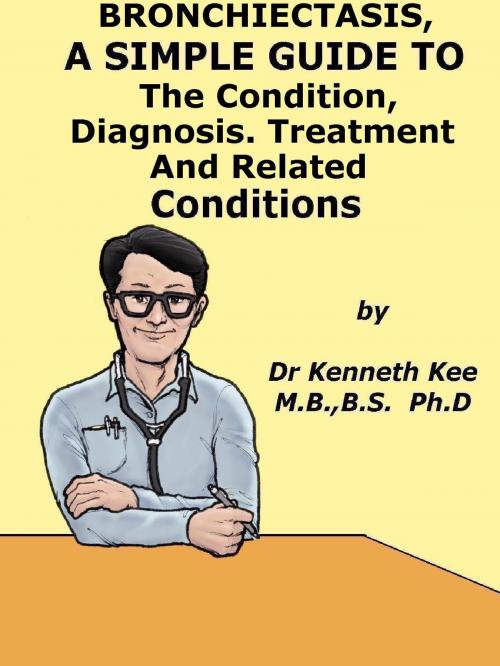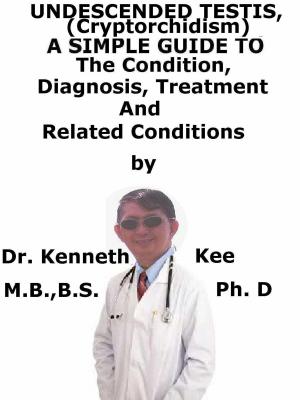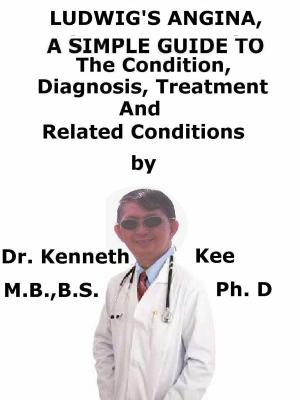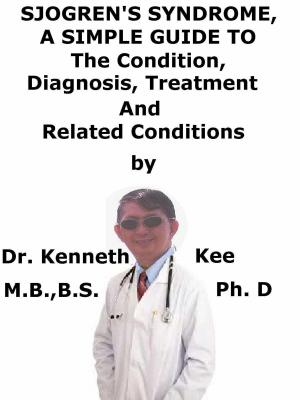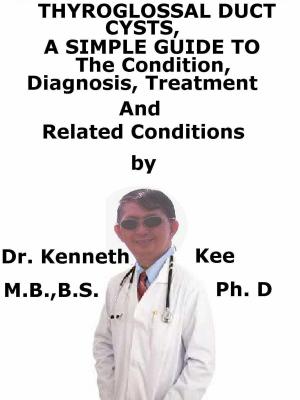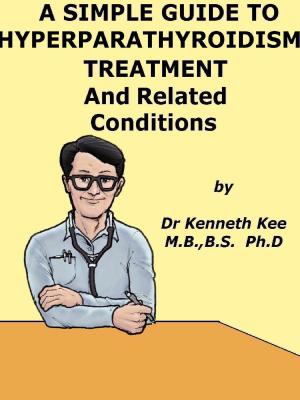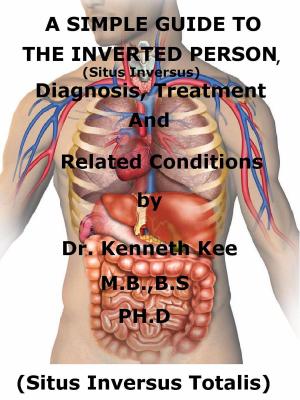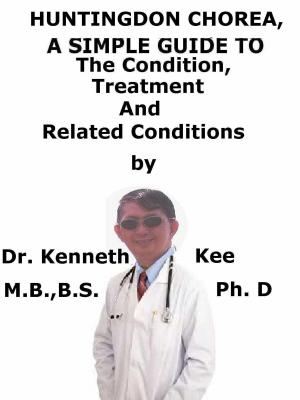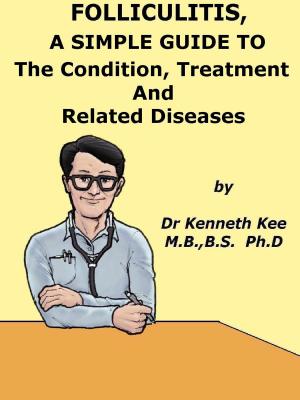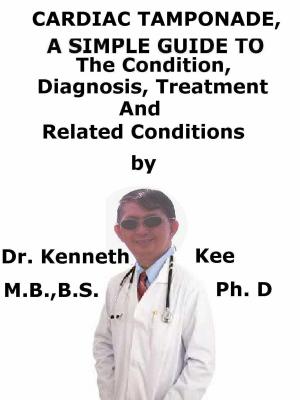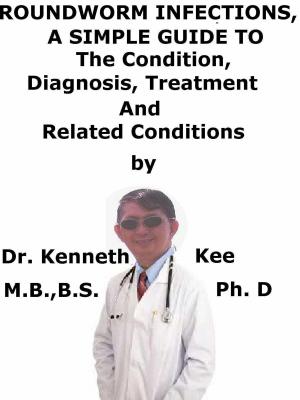Bronchiectasis, A Simple Guide To The Condition, Diagnosis, Treatment And Related Conditions
Nonfiction, Health & Well Being, Medical, Specialties, Pulmonary & Thoracic, Health, Ailments & Diseases, Respiratory| Author: | Kenneth Kee | ISBN: | 9781370745807 |
| Publisher: | Kenneth Kee | Publication: | September 27, 2016 |
| Imprint: | Smashwords Edition | Language: | English |
| Author: | Kenneth Kee |
| ISBN: | 9781370745807 |
| Publisher: | Kenneth Kee |
| Publication: | September 27, 2016 |
| Imprint: | Smashwords Edition |
| Language: | English |
Bronchiectasis is a not common respiratory illness which results in non reversible dilation of the bronchi.
This usually results from chronic infection.
Bronchiectasis is the result of damage and enlarging of the proximal and medium-sized airways.
Congenital bronchiectasis is the condition when it is present at birth.
Acquired bronchiectasis occurs later in life.
Bronchiectasis happens as a result of an infection or other condition that damages the walls of the airways or prevents the airways from clearing mucus.
The airways produce a slimy substance called mucus which help to remove inhaled bacteria, dust, and other small particles.
The air tubes slowly lose their ability to remove the mucus in bronchiectasis.
Mucus builds up and produces an environment in which bacteria can grow.
This results in repeated, serious lung infections.
Bronchiectasis results in serious health problems, such as atelectasis, respiratory failure, and heart failure.
Bronchiectasis can be unilateral or may affect many lobes of both lungs.
Symptoms often form gradually, and may happen months or years after the event that results in the bronchiectasis
a. Shortness of breath that gets worse with exercise
b Chronic cough with large amounts of foul-smelling sputum
c. Wheezing
Diagnosis
Using a stethoscope, the doctor may hear wheezing, rattling, small clicking, bubbling, or other sounds, often in the lower lobes of the lungs.
Visual inspection of sputum shows 3 layers of froth, clear fluid and pus. When the froth disappear there are left 2 layers: upper watery saline liquid and lower heavier pus cells and micro-organisms.
Chest x-ray showed raised bronchial fluid levels
Sputum culture may show evidence of tuberculosis or aspergillus
Bronchoscopy to define location and extent of disease
The aim of treatment is controlling infections and bronchial secretions, relieving airway obstruction, and preventing complications
Regular, daily postural drainage to clear pus and necrotic material and remove bronchial secretions is a routine part of treatment.
The bed is often tilted to help the postural drainage.
A physiotherapist can show the patient coughing exercises that will help reduce the mucous.
Antibiotics are the main treatment for infections; bronchodilators and expectorants for cough.
Surgery to resect localized disease of the lung may be needed if medicine does not work
With treatment of antibiotics and pulmonary toilet, most people can lead normal lives without major disability.
TABLE OF CONTENT
Introduction
Chapter 1 Bronchiectasis
Chapter 2 Causes of Bronchiectasis
Chapter 3 Symptoms of Bronchiectasis
Chapter 4 Diagnosis of Bronchiectasis
Chapter 5 Treatment of Bronchiectasis
Chapter 6 Prognosis of Bronchiectasis
Chapter 7 Chronic Obstructive Lung Disease
Chapter 8 Pneumonia
Epilogue
Bronchiectasis is a not common respiratory illness which results in non reversible dilation of the bronchi.
This usually results from chronic infection.
Bronchiectasis is the result of damage and enlarging of the proximal and medium-sized airways.
Congenital bronchiectasis is the condition when it is present at birth.
Acquired bronchiectasis occurs later in life.
Bronchiectasis happens as a result of an infection or other condition that damages the walls of the airways or prevents the airways from clearing mucus.
The airways produce a slimy substance called mucus which help to remove inhaled bacteria, dust, and other small particles.
The air tubes slowly lose their ability to remove the mucus in bronchiectasis.
Mucus builds up and produces an environment in which bacteria can grow.
This results in repeated, serious lung infections.
Bronchiectasis results in serious health problems, such as atelectasis, respiratory failure, and heart failure.
Bronchiectasis can be unilateral or may affect many lobes of both lungs.
Symptoms often form gradually, and may happen months or years after the event that results in the bronchiectasis
a. Shortness of breath that gets worse with exercise
b Chronic cough with large amounts of foul-smelling sputum
c. Wheezing
Diagnosis
Using a stethoscope, the doctor may hear wheezing, rattling, small clicking, bubbling, or other sounds, often in the lower lobes of the lungs.
Visual inspection of sputum shows 3 layers of froth, clear fluid and pus. When the froth disappear there are left 2 layers: upper watery saline liquid and lower heavier pus cells and micro-organisms.
Chest x-ray showed raised bronchial fluid levels
Sputum culture may show evidence of tuberculosis or aspergillus
Bronchoscopy to define location and extent of disease
The aim of treatment is controlling infections and bronchial secretions, relieving airway obstruction, and preventing complications
Regular, daily postural drainage to clear pus and necrotic material and remove bronchial secretions is a routine part of treatment.
The bed is often tilted to help the postural drainage.
A physiotherapist can show the patient coughing exercises that will help reduce the mucous.
Antibiotics are the main treatment for infections; bronchodilators and expectorants for cough.
Surgery to resect localized disease of the lung may be needed if medicine does not work
With treatment of antibiotics and pulmonary toilet, most people can lead normal lives without major disability.
TABLE OF CONTENT
Introduction
Chapter 1 Bronchiectasis
Chapter 2 Causes of Bronchiectasis
Chapter 3 Symptoms of Bronchiectasis
Chapter 4 Diagnosis of Bronchiectasis
Chapter 5 Treatment of Bronchiectasis
Chapter 6 Prognosis of Bronchiectasis
Chapter 7 Chronic Obstructive Lung Disease
Chapter 8 Pneumonia
Epilogue
